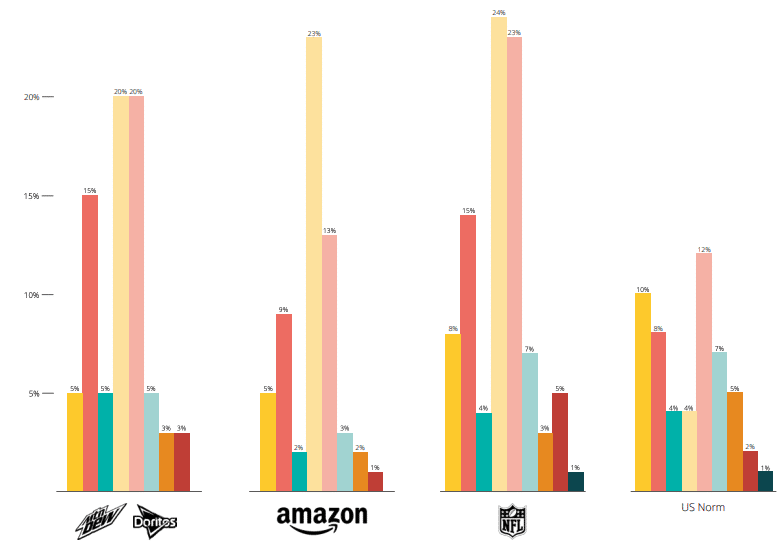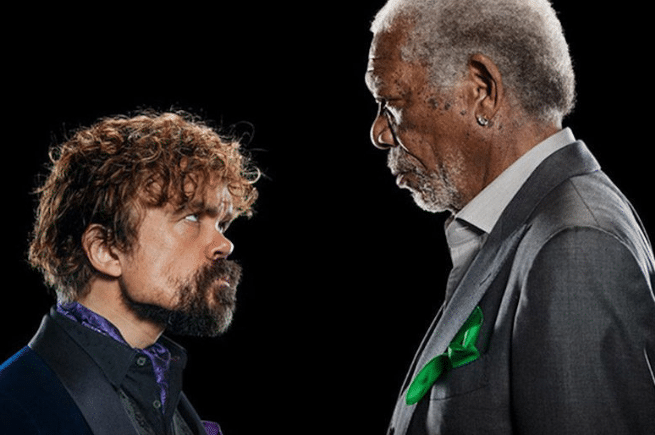Can Super Bowl ads get any funnier?
There were lots of laughs in 2018, but how will brands approach the 2019 Super Bowl?
Traditionally, Super Bowl ads are some of the year’s funniest. In 2018, brands’ sense of humor returned, with a combination of uplifting, nostalgic and laugh out loud ads. Super Bowl LII ads were 150% funnier than average US ads, which marked a change from the more serious batch of 2017 ads, where brands got controversial with political and social issues.
We recently published a Video Impact Study, looking at how last year’s Super Bowl ads performed which is where these figures come from. Click here to download the full study.
NFL’s “Touchdown Celebrations” was the funniest ad, with 24% of viewers reporting intense hilarity in response to seeing Eli Manning and Odell Beckham Jr recreate Dirty Dancing’s iconic dance scene. This was closely followed by Amazon’s “Alexa Loses Her Voice” (23% hilarity) which saw Amazon founder, Jeff Bezos, scrambling to find a substitute for Amazon’s voice assistant and Mountain Dew/Doritos’ “Rap Battle” (20% hilarity), where actors Peter Dinklage and Morgan Freeman faced off in a hip hop lip sync battle.
Just being funny isn’t always enough and ads in 2018 went for the element of surprise. The average prevalence of surprise was 18%, compared to a US norm of 13%. Surprise often goes hand in hand with humor: the top three most surprising ads were also the three funniest. These ads all featured celebrities, but amped up the impact by mixing up multiple celebrities and putting them in out-of-character situations.


As it becomes harder for ads to stand out during the Super Bowl, brands have to try different tactics, and this year’s most successful brands hit upon the magic combination of hilarity plus surprise and amazement.
This indicated that the use of unexpected combinations played a key role in each ad’s success: football with dance, serious actors with hip hop, and Amazon’s robotic voice assistant with a range of colorful celebrity personalities.
Different ads made different generations laugh more. Viewers who found the ‘Rap Battle’ ad funny tended to be millennials. Probably because they were more likely to be cool hunters, somewhat wary, but also imaginative. Whereas viewers who found the Alexa ad funny were slightly older, risk taking trend setters, who enjoy browsing music sites.

The rise in humor could be seen as a reaction to what many saw as a time of uncertainty and division. After events like Charlottesville, or the Las Vegas shootings, there was a move by brands to try and unite their audiences with broad appeal humor.
You’d be forgiven for thinking we live in bleak times. But according to Max Roser, an economist at the University of Oxford, the world has more reasons to be happier than ever before. In almost every way: poverty, literacy, health, freedom, and education are improving, and according to Unruly emotional data set, video advertising is getting happier too. After surveying almost half a million global respondents in 2018, the prevalence of positives across the ads we’ve tested has grown too – Happiness is up from 7% to 10%; Inspiration 5 to 8%; Amazement 4 to 7% and Warmth from 5 to 6%. There’s a huge opportunity for brands to give people what they want and lift the mood of the world in 2019.
For the Super Bowl, this combination of hilarity and happiness should see a change of pitch in the type of humor. If 2018 was an all-out gag fest, then expect 2019 to be warmer, and more inspirational whilst continuing to avoid divisive political issues.
Register your interest and be the first to receive our emotional analysis of 2019’s Super Bowl ads.
